Refine search
Actions for selected content:
13588 results in History of science and technology
The politics of participation: Francis Galton's Anthropometric Laboratory and the making of civic selves
-
- Journal:
- The British Journal for the History of Science / Volume 46 / Issue 3 / September 2013
- Published online by Cambridge University Press:
- 20 October 2011, pp. 445-466
- Print publication:
- September 2013
-
- Article
- Export citation
A Yahgan for the killing: murder, memory and Charles Darwin
-
- Journal:
- The British Journal for the History of Science / Volume 46 / Issue 3 / September 2013
- Published online by Cambridge University Press:
- 20 October 2011, pp. 415-443
- Print publication:
- September 2013
-
- Article
- Export citation

Kuhn's Evolutionary Social Epistemology
-
- Published online:
- 07 October 2011
- Print publication:
- 29 September 2011
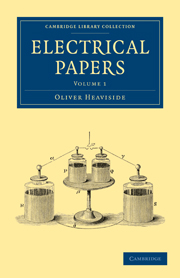
Electrical Papers
-
- Published online:
- 07 October 2011
- Print publication:
- 16 June 2011
- First published in:
- 1892
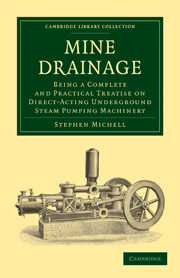
Mine Drainage
- Being a Complete and Practical Treatise on Direct-Acting Underground Steam Pumping Machinery
-
- Published online:
- 07 October 2011
- Print publication:
- 19 May 2011
- First published in:
- 1881
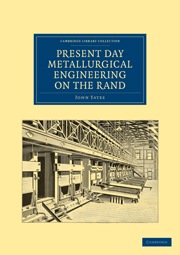
Present Day Metallurgical Engineering on the Rand
-
- Published online:
- 07 October 2011
- Print publication:
- 19 May 2011
- First published in:
- 1898
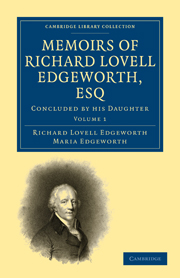
Memoirs of Richard Lovell Edgeworth, Esq
- Begun by Himself and Concluded by his Daughter, Maria Edgeworth
-
- Published online:
- 07 October 2011
- Print publication:
- 24 February 2011
- First published in:
- 1820

History of the Manufacture of Iron in All Ages
- And Particularly in the United States from Colonial Time to 1891
-
- Published online:
- 07 October 2011
- Print publication:
- 19 May 2011
- First published in:
- 1892
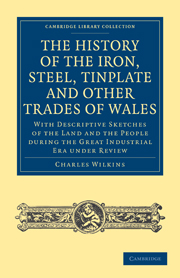
History of the Iron, Steel, Tinplate and Other Trades of Wales
-
- Published online:
- 07 October 2011
- Print publication:
- 20 January 2011
- First published in:
- 1903

Lighthouse Construction and Illumination
-
- Published online:
- 07 October 2011
- Print publication:
- 09 December 2010
- First published in:
- 1881
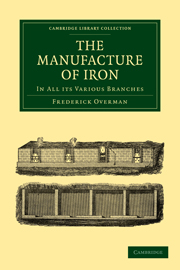
The Manufacture of Iron
- In all its Various Branches
-
- Published online:
- 07 October 2011
- Print publication:
- 19 May 2011
- First published in:
- 1850
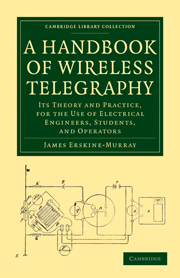
A Handbook of Wireless Telegraphy
- Its Theory and Practice, for the Use of Electrical Engineers, Students, and Operators
-
- Published online:
- 07 October 2011
- Print publication:
- 19 May 2011
- First published in:
- 1907
Chapter 5 - Kuhn’s historical perspective
- from Part II - Kuhn’s evolutionary epistemology
-
- Book:
- Kuhn's Evolutionary Social Epistemology
- Published online:
- 07 October 2011
- Print publication:
- 29 September 2011, pp 87-100
-
- Chapter
- Export citation
Chapter 11 - How does a new theory come to be accepted?
- from Part III - Kuhn’s social epistemology
-
- Book:
- Kuhn's Evolutionary Social Epistemology
- Published online:
- 07 October 2011
- Print publication:
- 29 September 2011, pp 186-200
-
- Chapter
- Export citation
Chapter 2 - The Copernican revolution revisited
- from Part I - Revolutions, paradigms, and incommensurability
-
- Book:
- Kuhn's Evolutionary Social Epistemology
- Published online:
- 07 October 2011
- Print publication:
- 29 September 2011, pp 34-47
-
- Chapter
- Export citation
Contents
-
- Book:
- Kuhn's Evolutionary Social Epistemology
- Published online:
- 07 October 2011
- Print publication:
- 29 September 2011, pp vii-viii
-
- Chapter
- Export citation
Bibliography
-
- Book:
- Kuhn's Evolutionary Social Epistemology
- Published online:
- 07 October 2011
- Print publication:
- 29 September 2011, pp 210-226
-
- Chapter
- Export citation
Index
-
- Book:
- Kuhn's Evolutionary Social Epistemology
- Published online:
- 07 October 2011
- Print publication:
- 29 September 2011, pp 227-229
-
- Chapter
- Export citation
Figures and table
-
- Book:
- Kuhn's Evolutionary Social Epistemology
- Published online:
- 07 October 2011
- Print publication:
- 29 September 2011, pp ix-ix
-
- Chapter
- Export citation
Chapter 9 - Kuhn’s constructionism
- from Part III - Kuhn’s social epistemology
-
- Book:
- Kuhn's Evolutionary Social Epistemology
- Published online:
- 07 October 2011
- Print publication:
- 29 September 2011, pp 149-169
-
- Chapter
- Export citation
